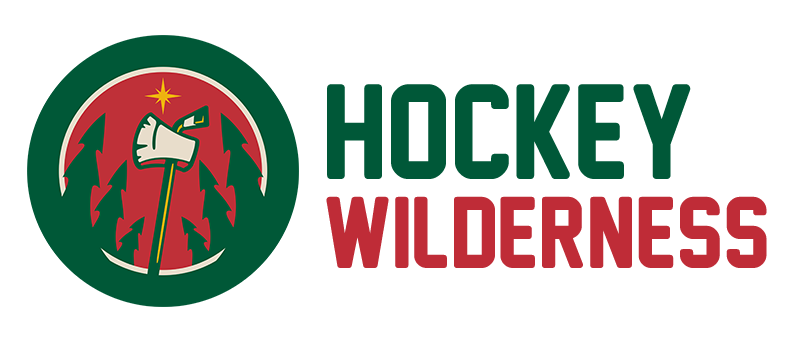
In my last piece, I described the Minnesota Wild’s defensive breakdowns. The Wild has struggled to put the puck in the net this season, but have still clinched a playoff spot. Now that Minnesota is facing off against the Las Vegas Golden Knights in the first round, let’s tackle what the Wild are doing right and where they can improve to make it past the first round.
Minnesota has netted 30 goals over the last 10 games. Regular zone play accounted for most of them, but two scenarios stood out.
Power plays accounted for 5 of the goals
The Wild have had one of the league’s worst power plays all season and finished 20th overall, but a one-man advantage still means more scoring opportunities. For the past 3 weeks, the Wild has implemented a new 5-forward power play strategy to boost their scoring chances. Though they have not yet scored significantly more power-play goals, it’s become a league-wide trend because of its effectiveness.
Hopefully, the Wild will be able to take advantage of their new strategy going into the first round, considering Vegas has been finding success in their power play.
Only 2 of Minnesota’s 30 goals were unassisted, which is unsurprising in the NHL, where passing is essential to scoring. The Wild scored many of their goals passing around the zone, but cycling is one of your strengths.
Minnesota used cycling to open space for 6 of their goals
The difference between cycling the puck and passing it around the zone is how cycling creates space. Players often drop the puck back down low in the zone and send it in the opposite direction of a defending player. Players also continue to move while cycling, making defending even harder.
Marcus Johansson’s goal against the San Jose Sharks last Saturday is an excellent example of this strategy. Jared Spurgeon brings the puck down the wall and passes to Gustav Nyquist. The defender, Sharks center Alexander Wennberg, is on Spurgeon, then switches direction to follow Nyquist.
Nyquist draws Wennberg up the wall before passing to Frederick Gaudreau. Wennberg continues to follow Nyquist. San Jose defenseman Lucas Carlsson steps up to defend Nyquist and slides it back to Johansson. Carlsson stays on Nyquist, so Johansson has room to walk in and score.
The constant movement and passing confuse the defending team, who are unsure whether to follow the puck or the passer. Eventually, a defender will make a mistake and cover the wrong player, allowing a different player to shoot undefended. While it takes keen awareness from the entire line, it’s a very effective strategy when they can pull it off.
17 of the Wild’s goals were direct shots, which include any shot from in front of the net where the goalie is present, excluding rebounds. A subset of direct shots are one-timers.
9 of the goals were one-timers
One-timers are one of the Wild’s primary strengths. During Minnesota’s March 25 game against the Knights, Mats Zuccarello sent a soft pass up to Johansson. Johansson slapped the puck in without collecting it first, making it a classic one-timer and a highlight-reel kind of goal.
While the Wild scored on typical one-timers like this, my definition is a little broader. I define one-timers as shots from passes that catch the goalie off-guard, whether it was a slapshot or a quick catch-and-release.
Johansson scored on a one-timer against the New York Rangers on April 2. He got a pass from Gaudreau low in the zone but had two Rangers players between him and the net. Instead of throwing it on net, he makes the smarter play and backhands it up to Brock Faber, who quickly catches it and shoots. Igor Shersterkin is not easily fooled and was able to re-position in time. However, the defense wasn’t, and Faber fired his shot past them.
The Wild capitalized on scoring opportunities in various other scenarios, including 1 breakaway goal, 2 overtime goals, 1 goal from a drop pass, and 1 on the penalty kill. Minnesota is 11-0-7 in overtime, so they certainly do not have a weakness during 3-on-3 play. Opportunities for breakaways and penalty-kill goals are rare.
Minnesota struggles to defend drop passes during zone entry and could benefit from doing it themselves. The Wild excel at dropping the puck back to cycle when they’re already in the offensive zone, but only scored one goal off a zone entry.
The Wild beat the Sharks in overtime on April 9 because Kirill Kaprizov dropped the puck back to Zuccarello and went deep to draw both of San Jose’s defensemen deeper. Zuccarello took that space and walked it into the zone before passing back to Kaprizov, who scored.
Rebounds accounted for 7 goals
Like one-timers, rebounds are hard to defend because the puck suddenly comes from a new direction. While players can specifically shoot for a rebound, the Wild mainly capitalizes off random rebounds, such as Faber’s goal against the Vancouver Canucks last Saturday. The puck popped out from another shot on net, and he stepped up to score.
Minnesota has the patience to cycle but also knows when to step out of place and slap it at the net, which is why rebounds are one of their strengths.
Zuccarello bounced the puck off of Ilya Sorokin from behind the net, which resulted in 1 goal. While I love a weird goal, this strategy won’t require much practice time.
Where did the rest of Minnesota’s scoring come from?
An empty netter accounted for 1 goal, while the remaining 5 were tip-ins. One came from out front, while 4 were back-door tips.
Back-door tips are fun to watch and hard to defend, but leaving someone low is not always advantageous. If possession is in contention and the puck ends up with the other team, a Wild player hovering at the goal line will have difficulty effectively backchecking.
Minnesota’s players are also constantly cycling, so the timing has to be just right for someone to open up back door. Given that their opponents will capitalize on every opening in the playoffs, this may be too risky of a strategy.
The Wild are especially effective at scoring off one-timers and creating time and space by cycling the puck. Going into the playoffs, they must play to their strengths and improve their scoring strategies. Given the Wild’s skill at cycling, they could utilize more drop passes upon zone entry to increase scoring opportunities. Minnesota will also need to find success with its new power play strategy to gain an edge over the competition. Hopefully, we’ll see an increase in Wild goals going forward.
Think you could write a story like this? Hockey Wilderness wants you to develop your voice, find an audience, and we'll pay you to do it. Just fill out this form.
-
 1
1






Recommended Comments
Join the conversation
You can post now and register later. If you have an account, sign in now to post with your account.
Note: Your post will require moderator approval before it will be visible.